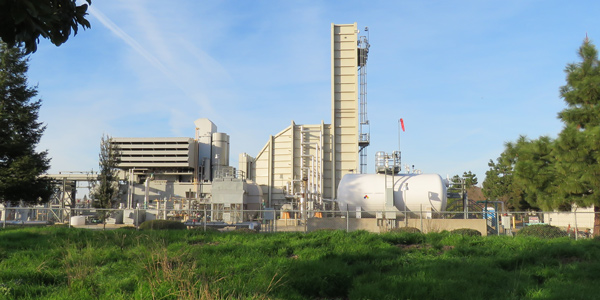By Jason Fordney
FERC last week rejected a major CAISO proposal to expand its backstop procurement process to prevent the early retirement of generation needed to maintain near-term reliability, saying the grid operator needs to “propose a more comprehensive package of reforms.”
In its April 12 order (ER18-641), FERC sided with parties that had protested CAISO’s Capacity Procurement Mechanism Risk-of-Retirement (CPM ROR) program, including the California Public Utilities Commission (CPUC), six California cities, the state’s three investor-owned utilities and the ISO’s Department of Market Monitoring.
“We find that CAISO has not adequately demonstrated that its proposal addresses the front-running concerns raised by protesters and that the proposal will avoid potentially deleterious effects on the competitiveness of capacity procurement under CPUC’s resource adequacy program,” FERC said.
CAISO spokesman Steven Greenlee said Friday that the ISO is reviewing the order “and will be considering our next steps as part of the ongoing stakeholder process.” In recent meetings, ISO officials have been telling market participants they expected FERC to approve the rule changes.
But stakeholders had been critical of the program throughout the development process. (See CAISO, Stakeholders Debate RMR Revisions.)
CAISO has two major backstop procurement programs, CPM and its mandatory reliability-must-run program that is also raising stakeholder objections for providing out-of-market payments to keep gas-fired generators online. The ISO is considering merging the two programs.
The rejected CPM ROR program would have expanded the existing CPM process to include procurement of at-risk capacity needed for the next resource adequacy compliance year. The process would have included two request windows for generators to seek a CPM designation, one in April and other in November of each year. FERC said that in practice, CAISO currently makes the designation in mid-December at the earliest for the following year, which generation owners complained occurs too late in the year for their planning decisions.
But the CPUC argued that the spring application window would allow resources to “front-run” its resource adequacy process and could lead to other gaming by resources because CPM revenues might exceed market revenues. IOUs raised concerns that a more holistic approach is needed and that CAISO did not consider the interplay with RMR, which is a mandatory contract unlike the voluntary CPM.
The CPUC has also battled with CAISO over RMR designations for gas units, and in February it hastily crafted and passed an order mandating that CAISO-approved RMRs be replaced with energy storage by 2019. (See CPUC Targets CAISO’s Calpine RMRs.)
Stakeholders also complained that the CPM proposal’s cost-based compensation provides for full cost recovery while also allowing resources to retain revenues earned in the ISO’s market. The Monitor had argued the units should not receive compensation beyond their cost of service, and that the changes could affect the bilateral resource adequacy market.
CAISO had contended that “front-running” of the RA process would not occur, but FERC said “the potential for the spring request window to distort prices or otherwise interfere with the bilateral resource adequacy process have merit and are significant enough to render CAISO’s proposal unjust and unreasonable.”
FERC also said that CAISO’s development of the current package of RMR/CPM changes indicate a need to more closely align the two programs. The commission said there is a “need to evaluate the fundamental reliability and market factors associated with resource adequacy as a whole.”
The commission said CAISO should revisit the issues of RMR/CPM compensation, evaluate whether both need to be retained and examine how the CPM designations could affect procurement. CAISO will make quarterly filings beginning June 1 to give updates on the stakeholder process and any changes that occur as it progresses. FERC said it would not move or act on the filings.





